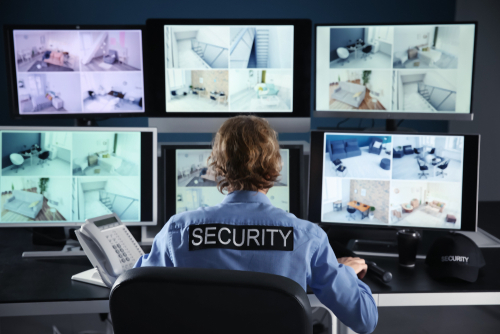Unfortunately, as gun violence continues to increase throughout the United States, all types of facilities should strive to know how to deal effectively with active shooter situations. There were 649 mass shootings in 2022 alone and already over 300 this year as of June 2023, according to the Gun Violence Archive.

Facilities Management Advisor’s FM Now: Secure Buildings online summit was held on June 20 and included an educational session called “Detection & Response Activation: Critical Components for Active Shooter Technology Solutions,” sponsored by Omnilert.
The session featured Mark Franken, Vice President of Marketing at Omnilert, and Eric Polovich, Lead Customer Evangelist at Omnilert.
Omnilert started in 2004 and was one of the first companies in the emergency mass notification market. Today, it partners with higher education, K–12 schools, health care, manufacturing, nonprofits, retail, and more to develop emergency communications resources.
Emergency Notifications
Franken noted that gun violence has become a reality for all types of organizations. He aims to help answer the question many facilities management and security professionals have: “How do you prepare for a potential situation that may involve guns on your property?”
Specifically, Franken advocates for the following emergency notification and automation capabilities:
- Notification broadcast: Get a message to a large population. Examples include text, e-mail, voice, safety smartphone apps, social media, digital signage, alarms, and access control.
- Mass engagement: Create a two-way conversation by reaching out to smaller groups by location. This provides for the ability to obtain immediate feedback from users near the emergency.
- Response automation: Automating, scripting, and visualizing how to respond during a specific emergency. Many companies have binders that detail their emergency protocols.
- Preventive solutions: Create ways to prevent an emergency, which can include artificial intelligence (AI) gun detection, sharing severe weather alerts, and panic button alarms.
Humans vs. AI
While some might think video surveillance is good enough, Polovich suggests looking at options that go beyond just the human element and consider those that also use technology. As he explains, there’s a big difference between having humans watch video feeds and having AI watch them.
Polovich cited an Internet Protocol Video Market (IPVM) study showing that of the 70 million surveillance cameras in the United States, less than 1% of video is watched live, and 95% of activity can be overlooked by security professionals after watching for 22 minutes.
Giving the February 14, 2018, shooting at Marjory Stoneman Douglas High School in Parkland, Florida, as an example, Polovich said multiple cameras captured the shooter with a gun before the first shots were fired. There was a 1-minute, 20-second delay between when the camera captured the shooter and when the first 911 call was received.
Alerts to First Responders
Today’s technology can detect handguns and long guns almost immediately and send an alert to security or first responders with:
- An image of the shooter
- A short video of the shooter
- The name of the camera
- The location of the camera in latitude and longitude
To prevent false alarms, it can detect people and their movements, as well as the movements of the gun.
This is expected to speed up the emergency response, possibly preventing or reducing the severity of the tragedy.
Additionally, he suggests using cameras as active devices to follow shooters to capture their location so it can be passed on to first responders.
Multilayered Approach
Polovich explains that while AI technology doesn’t require security professionals to be on-site, he cautions that the technology is unable to detect hidden guns in bookbags, as well as holstered guns, and advises you to consider having AI as part of a layered security solution.
The main advantage of multilayered security measures is that they offset the weaknesses of any one security measure. For example, in the previous example, security professionals at metal detector checkpoints require everyone to empty their pockets and have their bags X-rayed. This would enable the immediate detection of a gun that wouldn’t be detected until it was taken out of the bag if only AI camera technology were used.
Polovich says facilities should therefore consider the following multilayered security measures:
- Human detection: Security professionals look for potential threats using video surveillance.
- Metal detection: Having traditional walk-through metal-sensing screening devices.
- Audible detection: Detecting gunshots and similar sounds through microphones.
Learn More
To watch the entire webinar on demand, click here.
ALSO READ: Preventing Workplace Violence Through Situational Awareness
